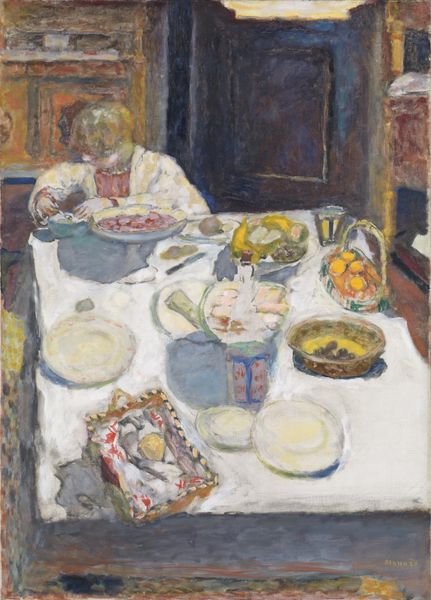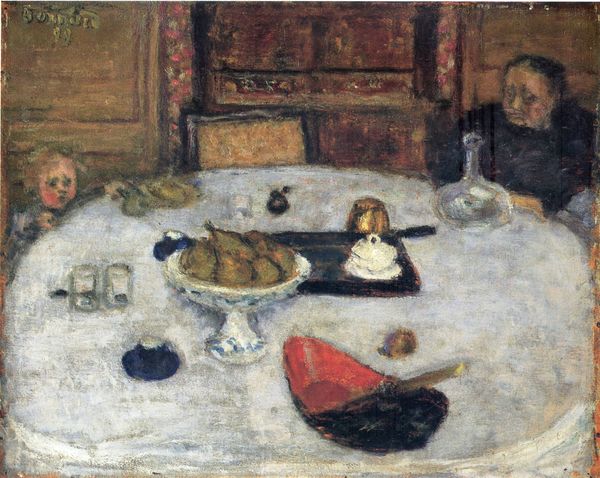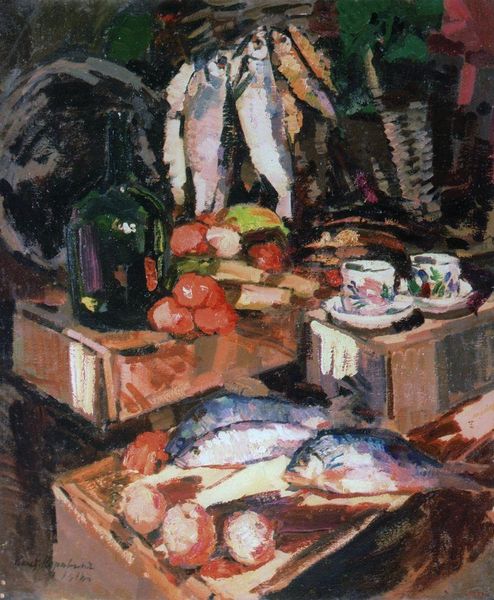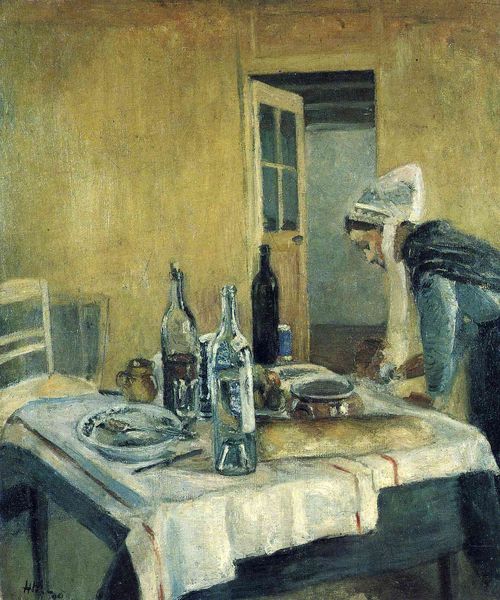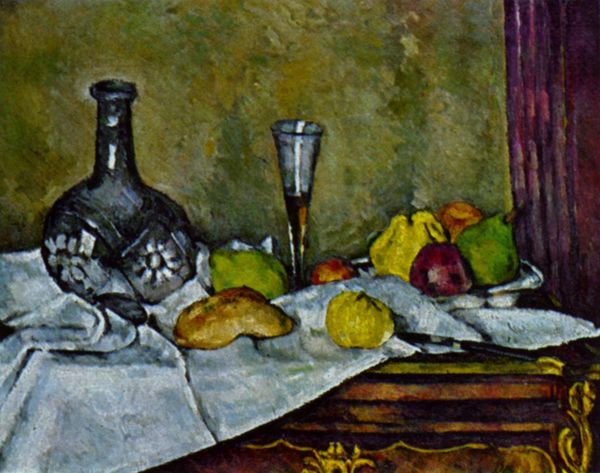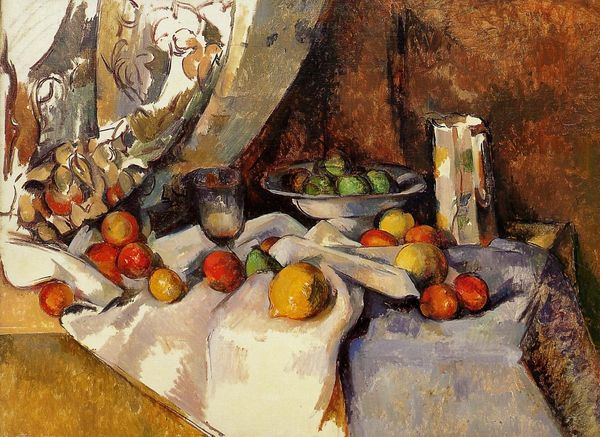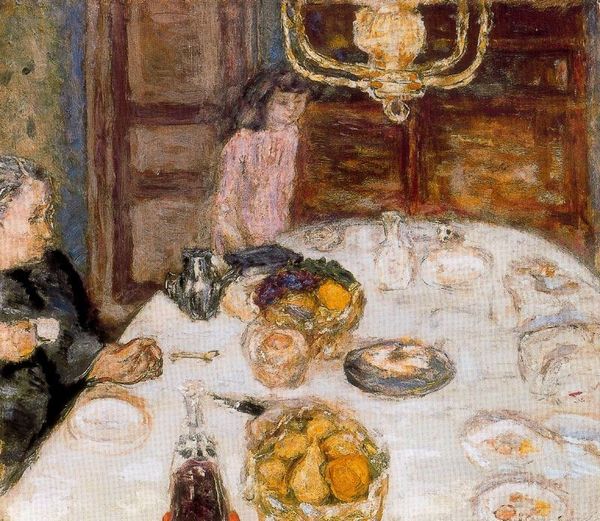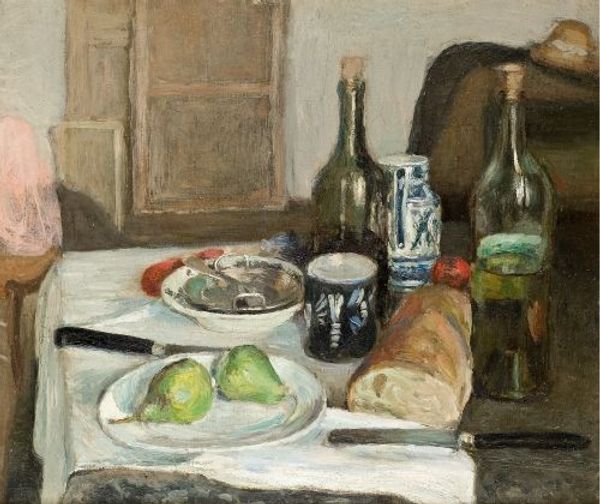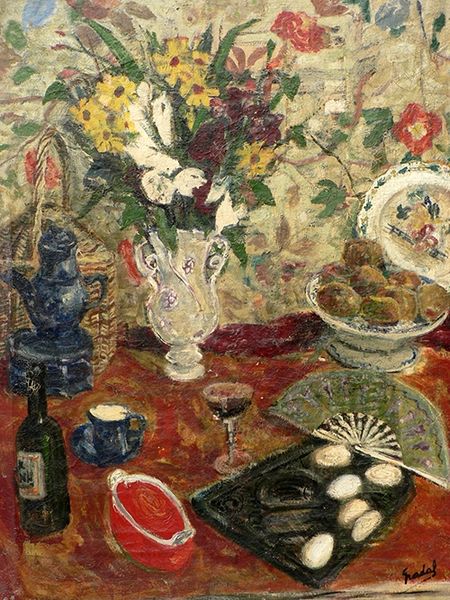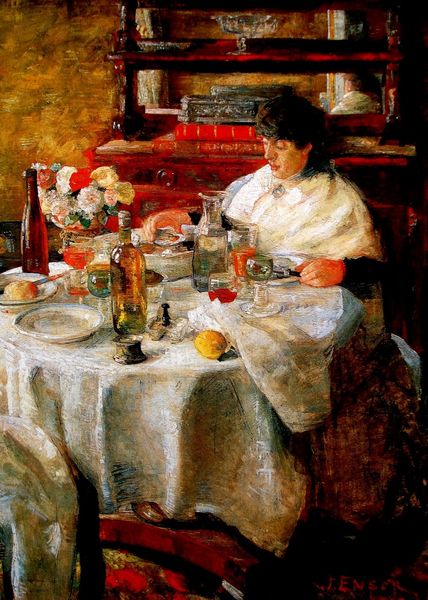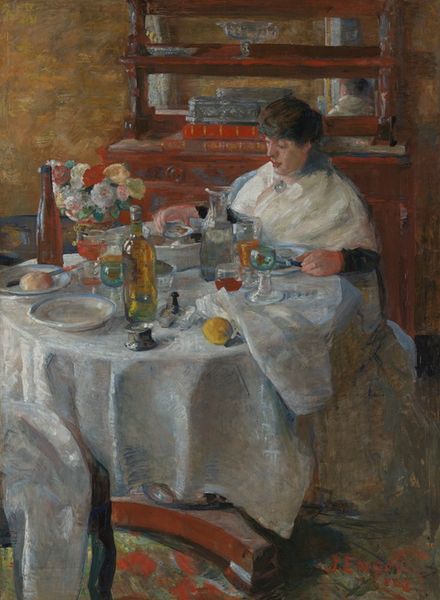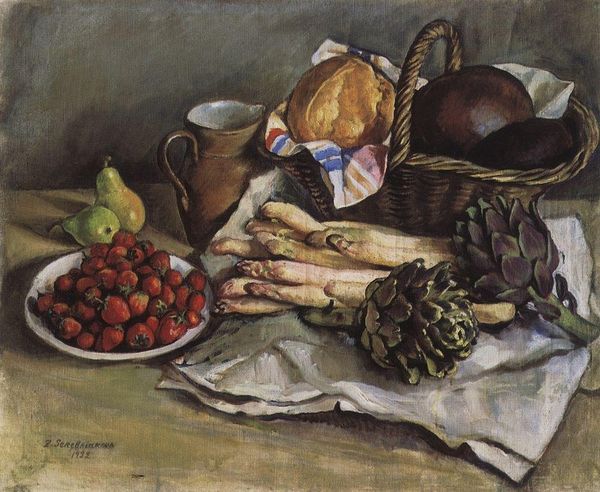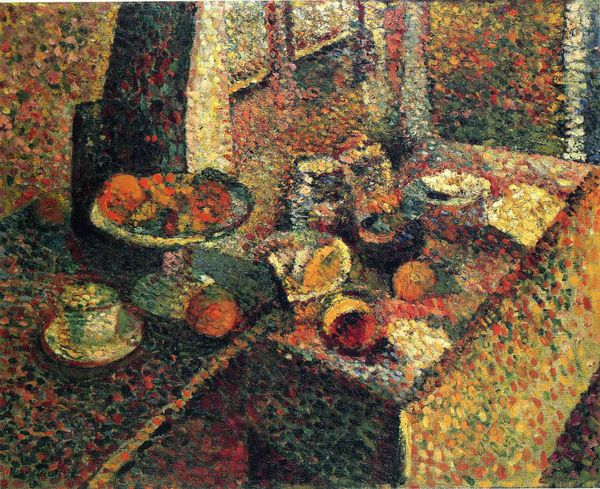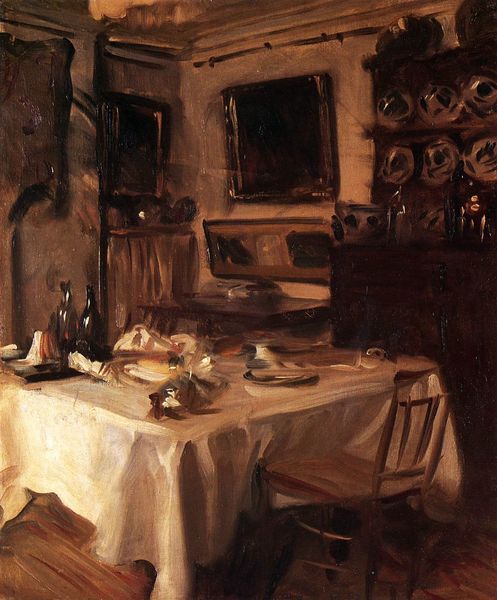
painting, oil-paint
#
portrait
#
painting
#
oil-paint
#
oil painting
#
studio composition
#
genre-painting
#
post-impressionism
Dimensions: 100 x 131 cm
Copyright: Public domain US
Editor: Here we have Henri Matisse's "The Dinner Table" from 1897, an oil painting currently held in a private collection. I’m struck by the quiet, almost domestic feel of the scene, yet there’s also something slightly unsettling about the woman's hunched posture. How do you interpret this work? Curator: It's a fascinating piece when viewed through a socio-political lens. Notice how the table, laden with abundance, dominates the composition. It begs the question: who benefits from this display? Is this a celebration of bourgeois domesticity or a subtle commentary on the labor and class divisions required to sustain such a scene? Editor: I hadn’t considered the class element. I was so focused on the intimate setting. Curator: Consider the woman, perhaps a domestic worker, arranging the flowers. Her figure seems almost secondary, subsumed by the objects on the table. How does this representation align with the broader narratives surrounding women's roles and labor in the late 19th century? Does Matisse elevate or diminish her presence? Editor: That's a good point. She’s present but almost anonymous, defined by her service. It feels like Matisse isn’t making a grand statement, but he’s quietly showing a reality of the time. Curator: Precisely. The muted tones and somewhat rough brushstrokes, characteristic of Post-Impressionism, also play a role. Do they evoke a sense of authenticity, revealing the unvarnished truth behind the veneer of polite society? Or do they serve to distance us from the scene, reinforcing the woman's isolation? Editor: It’s like he’s not idealizing anything. The imperfections almost humanize it, but also highlight the disparity. It feels like a glimpse into a world where beauty and inequality coexist. Curator: Indeed. Art, at its most potent, compels us to confront uncomfortable truths and question the narratives we inherit. This seemingly simple domestic scene becomes a rich ground for exploring power dynamics, gender roles, and the complexities of the human experience. Editor: I'll definitely look at Matisse, and art from that era, differently from now on. Thank you for highlighting those crucial intersectional dimensions!
Comments
No comments
Be the first to comment and join the conversation on the ultimate creative platform.
